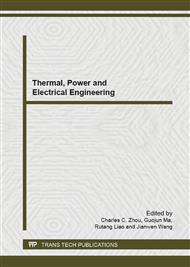p.120
p.127
p.133
p.138
p.144
p.148
p.152
p.156
p.161
The Effect of Wind Speed on Cooling Tower Plume Dispersion
Abstract:
Wind speed was an important impact factor when simulating the cooling tower plume dispersion. The SACTI model was selected in this paper and this model was used to predict the plume dispersion character discharging from cooling tower under normal operation and three different kinds of wind speeds. The three kinds of wind speeds were 2 m/s, 4 m/s and 6 m/s and it was analyzed that the plume character under these three wind speeds. Results showed that the plume length, plume height and plume radius will present different change trend when wind speed changed.
Info:
Periodical:
Pages:
144-147
Citation:
Online since:
August 2013
Authors:
Price:
Сopyright:
© 2013 Trans Tech Publications Ltd. All Rights Reserved
Share:
Citation:


